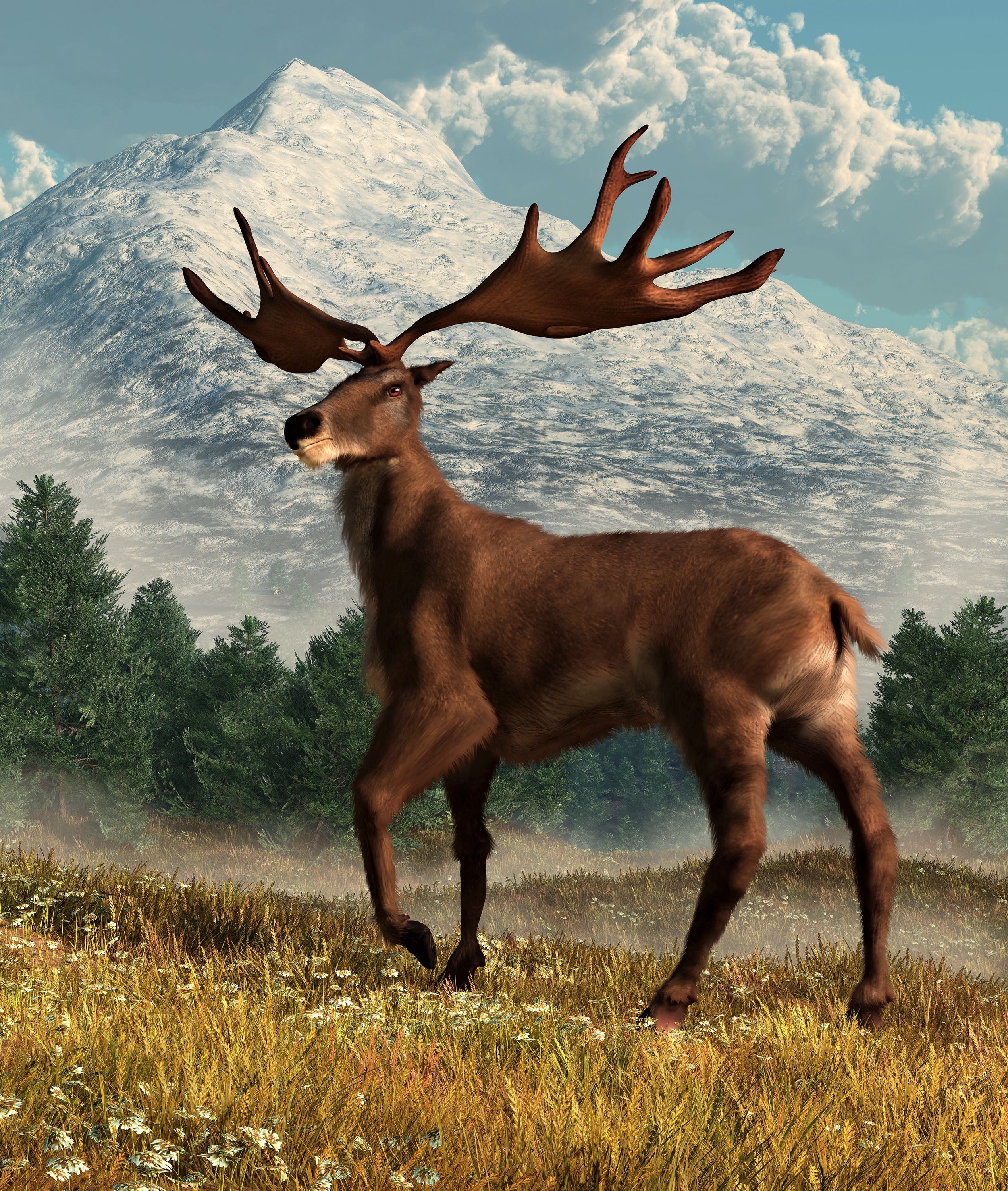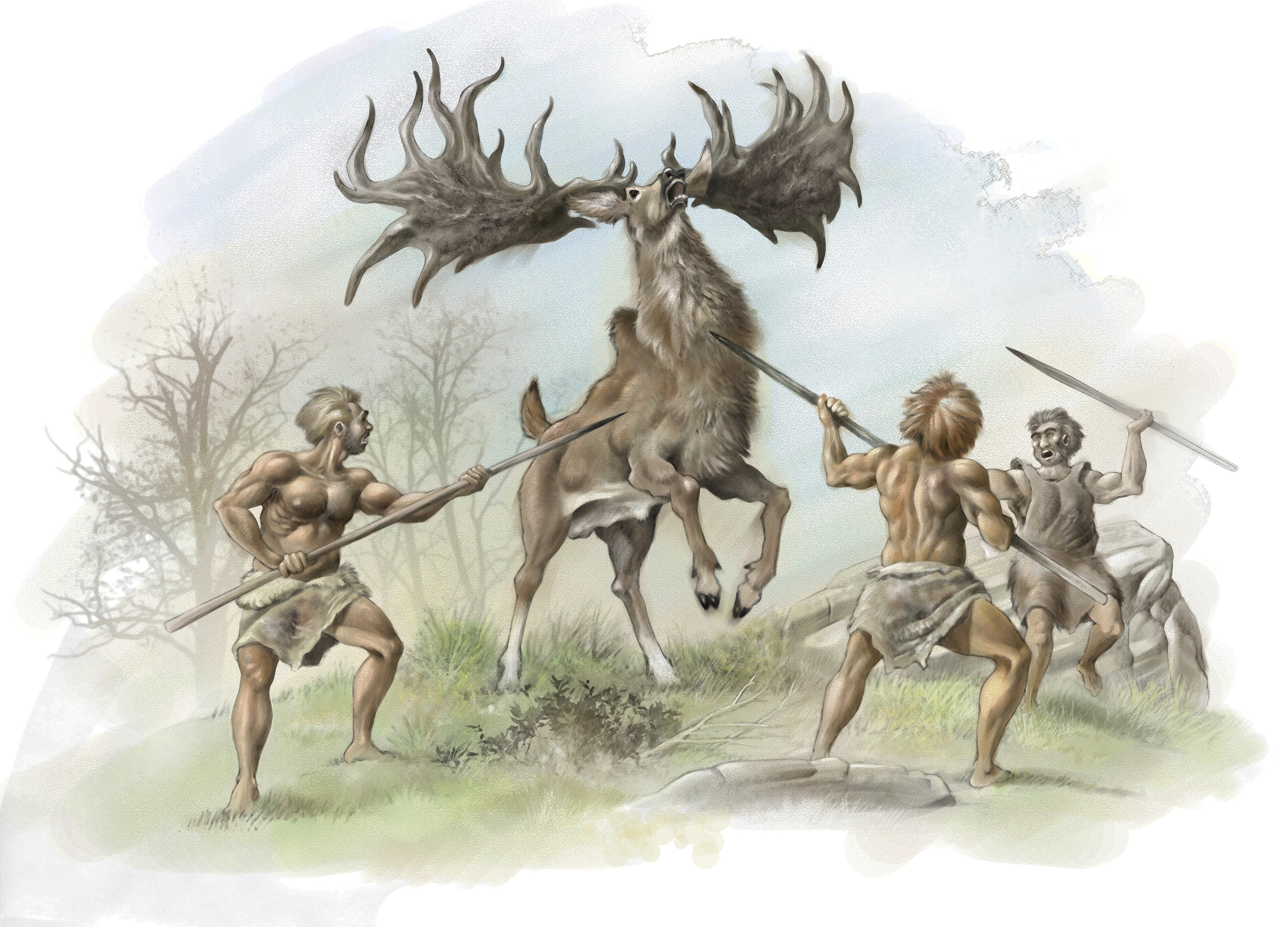Irish elk was a giant prehistoric deer of Europe and Asia. It is one of the largest deer that has ever lived, growing up to 7 feet (2 meters) tall at the shoulder. It is called the Irish elk because skeletons of this species were found preserved in Irish peat bogs. Some scientists call the Irish elk the giant Irish deer.

The Irish elk is known for its enormous antlers, which measured up to 12 feet (3.7 meters) from tip to tip. The antlers could weigh nearly 100 pounds (45 kilograms). Males used their antlers in combat with other males and for display in mating competitions. The antler size of larger males gave them an advantage over smaller or younger males.
Irish elk lived during the late Pleistocene Epoch, from 1.6 million years ago to about 11,000 years ago. The species mostly died out by the end of the Pleistocene, but some survived until around 7,700 years ago. Prehistoric people may have hunted Irish elk for their fur and meat, but scientists have not determined whether humans contributed to their extinction.

Like other deer, Irish elk were grazers. They lived in small herds and shared their habitat with mammoths, mastodons, reindeer, and caribou. Irish elk were probably common prey for giant bears, dire wolves, and large cats.
